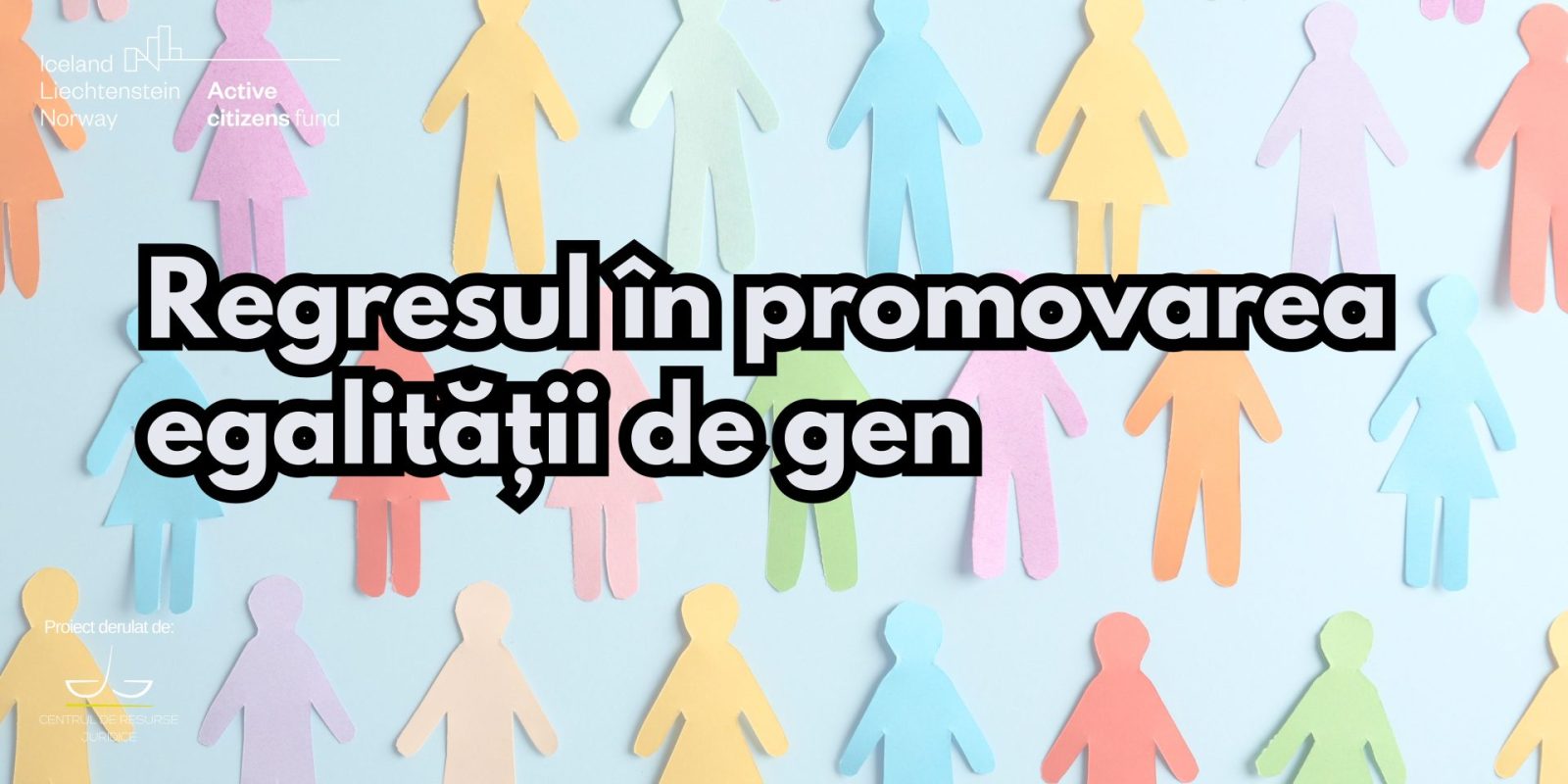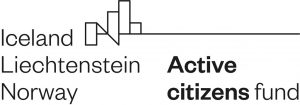- A worrying trend
“This is a new and unusual generational pattern,” said the Director of the Policy Institute at King’s College London.[1] According to a survey by the same university, 1 in 4 men in the UK aged 16 to 29 think it is harder to be a man than a woman.[2] In the same age sample, 16% of men think feminism has done more harm than good, a figure that is higher than among men over 60 (13%).[3]
A study taken by Libertatea from El Pais shows that 52% of Spanish men aged 16 to 24 consider themselves discriminated against as a result of promoting gender equality [4], while 44% of men in the general population agree with the statement.[5] At the same time, another study among young Spanish men aged 14 to 29 shows that they believe that gender violence does not exist and is just an ideological invention.[6]
These trends among young men in the UK and Spain are surprising, given that these are countries where the gender equality index in 2020 was 72.7% (UK) and 72% (ES) respectively.[7] Experts point out that this trend is bizarre because younger generations are usually more comfortable with new social norms because they become familiar with them while growing up.[8]
The opinion among young people in Romania (regardless of gender) aged 15 to 29 in 2018-2019 was as follows: 5.9% considered that women have too many rights, 55.5% that they have enough rights and only 28.2% that their rights are insufficient.[9]
Between 2010 and 2020, Romania held the same position in the EU gender equality ranking (26 out of 28) with a percentage of 54.4%, which increased by only 3.6 points compared to 2010 and decreased by a 0.1 point compared to 2017. In 2023, Romania fell in this ranking, having the lowest gender equality index of all EU countries, namely 56.1%, when the European average was 70.2%.
2. Backlash in gender equality
This trend among individuals is also reflected at the level of state policies by the general regression and hostility towards gender equality policies and women’s rights (“backlash in gender equality”).
The European Parliament has proposed the following definition for this phenomenon:
“ whereas a backlash can be defined as resistance to progressive social change, regression on acquired rights or maintenance of a non-egalitarian status quo, and whereas the backlash against women’s rights and gender equality is particularly worrying; whereas such resistance can be exercised regardless of one’s social background or age, can be of both a formal or informal nature, and can involve passive or active strategies to counter further progress by trying to change laws or policies which would ultimately limit citizens’ acquired rights; whereas this has been accompanied by the dissemination of fake news and harmful stereotypical beliefs;” [12]
This phenomenon that has emerged in recent years has also been observed by the FEMM Committee of the European Parliament, which has noted a resistance of states in policies such as education, sexual and reproductive health and violence against women. In 2018, Romania experienced the consequences of this trend by implementing a curriculum that does not include the compulsory study of sex education and does not promote gender equality.[14]
The most notable examples of resistance to gender equality policies were the law banning any reference to gender identity in schools and universities [15] and the referendum that attempted to redefine the family as marriage between a man and a woman.[16] Even though the law was declared unconstitutional by the Constitutional Court in 2020 [17], and the 2018 referendum on the redefinying the family did not pass [18], these are still examples that highlight Romania’s regression in terms of gender equality policies.[19] Given that a new initiative to revise the Constitution to redefine the family as a consensual marriage between a man and a woman was launched in early February 2024, not much seems to have changed in recent years.[20]
3. International, European and national proposals to protect gender equality
- International
In the Spanish study mentioned above, in which men say they feel discriminated against in terms of equality, 81% of women believe that men also need to fight for women’s rights in order to speak of true equality.[21]
The UN Working Group on Discrimination against Women and Girls believes that more than just men’s involvement is needed, but a reframing with a focus on men’s responsibility to achieve gender equality[22]. Men’s accountability on this issue must still have women’s rights at its core to combat discrimination in attitudes, norms and systems. [23] A number of measures proposed by the UN Working Group are:
1. Adopt policies, programmes or initiatives on men’s responsibility in the field of equal opportunities based on the realization of women’s and girls’ rights. [24]
2. Take action to change the structures and systems that create and perpetuate gender inequality and not just the values, beliefs and attitudes of individuals. For the individual level, states must have a human rights-based education system and curriculum that would ensure that men and boys recognize and reject male privilege and the power that comes with it.[25]
3. Support and solidarity with movements and groups that defend women’s rights.[26]
4. Ensure the transparency of the work of organisations and initiatives working with men on gender equality so that women’s rights are not ignored in their work.[27]
It should also be borne in mind that there is a general obligation to adopt measures to protect women’s rights under Article 5(a) of the Convention on the Elimination of All Forms of Discrimination against Women:
” States Parties shall take all appropriate measures: (a) To modify the social and cultural patterns of conduct of men and women, with a view to achieving the elimination of prejudices and customary and all other practices which are based on the idea of the inferiority or the superiority of either of the sexes or on stereotyped roles for men and women;”[28]
- European Union (EU) level
In 2019, the European Parliament adopted a key resolution on the backlash of women’s rights and gender equality in the EU [29], emphasizing in the preamble that these attempts at restriction are “a sign of a broader societal conflict”[30] and that the EU gender equality index has made only marginal progress between 2005-2015.[31] It also recalls that according to Article 8 of the Treaty on the Functioning of the European Union,[32] the task of eliminating inequalities between women and men is a primary responsibility of the Member States.[33]
In this resolution, the European Parliament proposed a series of measures to combat this phenomenon, such as:
1. Widespread denunciation of discourses and measures that undermine women’s rights, autonomy and empowerment in all areas [34]
2. Blaming the reinterpretation and refocusing of gender equality policy in terms of family and maternity policy [35]
3. The inclusion of gender equality not only as a mere enshrinement of women’s rights in legislation, but through effective transposition and by applying them as a guiding principle for all national and European public policies [36]
4. Adopting the necessary preventive measures to combat gender-based violence[37]
5. Provide gender-sensitive legal assistance to victims of gender-based and domestic violence[38] and the financial resources to combat this form of violence.[39]
6. Abandon cutbacks that affect gender equality programmes, public services and sexual and reproductive health services, and take steps in the opposite direction.[40]
7. Provide comprehensive sexuality and relationship education for young people through comprehensive educational strategies that help preventing all forms of gender-based violence from adolescence.[41]
The EU did not stop discussing this setback in 2019, mentioning it most recently in January 2024 in a European Parliament resolution in the context of the denial of access to safe and legal abortion services, considering it a form of gender-based violence and calling once again for the right to abortion to be included in the Charter of Fundamental Rights of the European Union.[42]
The EU made its position clear by becoming a party to the Istanbul Convention on preventing and combating violence against women and domestic violence,[43] and agreeing on an interim version of a Directive on combating violence against women and domestic violence.[44] This new directive states in its preamble that 1 in 3 women in the EU is a victim of gender-based violence and domestic violence and that 1 in 2 young women is a victim of gender-based cyber violence.[45] This directive provides for general provisions on female genital mutilation, non-consensual sharing of intimate or manipulated material and cyber harassment.[46]
-National level
Romania has adopted a number of laws in recent years that contribute to the promotion of gender equality, such as criminalising sexual harassment in university and school settings [47] and changing the legal classification of sexual intercourse with a minor under the age of 16 to rape. However, these measures are insufficient and weak as long as the change is only a coercive and post hoc one, rather than a systematic one that includes effective measures to promote equal opportunities in the private and public sphere.
The national strategy on promoting equal opportunities and treatment between women and men and preventing and combating domestic violence for the period 2022-2027 does not mention the backlash that has taken place in the defence of women’s rights in recent years.[49] It also does not acknowledge the fact that Romania has been at the bottom of the gender equality ranking in recent years, but sees this as a “slow evolution in relation to other EU Member States”.[50]
The national strategy also never mentions the right to abortion, speaking only generally about reproductive health, but with a focus on pre and post-natal services.[51]
4. Conclusions and recommendations
In the face of the general trend of regression towards the promotion of equal opportunities and women’s rights, Romania continues to score last in the gender equality ranking without the Romanian state taking any responsibility or implementing effective measures. We propose the following measures:
- Adopt measures with a focus on men’s responsibility for gender equality according to UN standards.
- To adopt measures against the backlash in equal opportunities according to European standards, as set out in the Resolution on Women’s Rights and Gender Equality in the EU and subsequent legislation.
- Developing effective national programmes, strategies and laws with equality and women’s rights at their core.
________________________________________
[1] Robert Booth, Gen Z boys and men more likely than baby boomers to believe feminism harmful, says poll, the Guardian (1 Feb 2024), URL: www.theguardian.com/news/2024/feb/01/gen-z-boys-and-men-more-likely-than-baby-boomers-to-believe-feminism-harmful-says-poll accessed 13 Feb 2024. (Guardian article) [2] Idem. [3] Idem. [4] Laurențiu Ungureanu, Nearly half of Spanish men feel discriminated against by gender equality and 20% of young people believe that violence against women is an invention | STUDY, Libertatea (28 Jan 2024), URL: www.libertatea.ro/stiri/studiu-aproape-jumatate-din-barbatii-spanioli-se-simt-discriminati-de-egalitatea-de-gen-si-20-din-tineri-cred-ca-violenta-impotriva-femeilor-este-o-inventie-4785770 (Romanian only) accessed 13 February 2024. (Libertatea article) [5] Idem. [6] Idem. [7] European Institute for Gender Equality, Gender Index 2020 Romania, URL: https://eige.europa.eu/sites/default/files/documents/mhag20012roa_002.pdf accessed 13 February 2024. (Gender Index 2020 Romania) [8] Supra n 1, Guardian article. [9] Gabriel Bădescu, Daniel Sandu, Daniela Angi, Carmen Greab, Study on young people in Romania 2018-2019, Friedrich-Ebert-Stiftung, URL: https://library.fes.de/pdf-files/bueros/bukarest/15294.pdf (Romanian only) accessed 15 February 2024. [10] Supra n 7, Gender Index 2020 Romania. [11] European Institute for Gender Equality, Gender Equality Index, URL: https://eige.europa.eu/gender-equality-index/2023/RO accessed 16 February 2024. [12] P8_TA(2019)0111 Experiencing backlash in women’s rights and gender equality in the EU European Parliament resolution of 13 February 2019 on experiencing a backlash in women’s rights and gender equality in the EU (2018/2684(RSP)), URL: https://www.europarl.europa.eu/doceo/document/TA-8-2019-0111_EN.pdf accessed 15 February 2024 (European Parliament resolution on the regression of women’s rights). [13] Borbála JUHÁSZ, Enikő PAP, Backlash in Gender Equality and Women’s and Girls’ Rights, Women’s Rights & Gender Equality, Study requested by the FEMM committee, European Parliament, June 2018, p 9, URL: www.europarl.europa.eu/RegData/etudes/STUD/2018/604955/IPOL_STU(2018)604955_EN.pdf accessed 14 February 2024. [14] FRA, Challenges facing civil society organisations working on human rights in the EU, URL: https://fra.europa.eu/sites/default/files/fra_uploads/fra-2018-challenges-facing-civil-society_en.pdf, p 61-71, accessed 14 February 2024. [15] Raluca Pantazi, Any reference to gender identity has been banned in schools and universities by the Senate, the decision-making chamber. Initiator of the amendment: a PMP senator theologist educated in the USA, Edupedu (16 June 2020), URL: www.edupedu.ro/orice-referire-la-identitatea-de-gen-a-fost-interzisa-in-scoli-si-universitati-de-senat-camera-decizionala-initiatorul-amendamentului-un-senator-pmp-teolog-scolit-in-sua/ (Romanian only) accessed 14 February 2024. [16] Petre Dobrescu, Referendum for the family 2018. The attempt to amend the Constitution failed, Libertatea (7 October 2018), URL: www.libertatea.ro/stiri/referendum-pentru-familie-2018-2408195 (Romanian only) accessed 14 February 2024. [17] CCR: Law banning reference to gender identity in schools unconstitutional, Digi 24 (16.12.2020), URL: www.digi24.ro/stiri/actualitate/justitie/ccr-legea-care-interzice-referirea-la-identitatea-de-gen-in-scoli-e-neconstitutionala-1419118 (Romanian only) accessed 14 February 2024 [18] Supra n 12. [19] Laura Grünberg, Gender Barometer. Romania 2018, FILIA Center, https://centrulfilia.ro/new/wp-content/uploads/2021/01/Gender-Barometer_Introductive-Study-EN.pdf accessed 15 February 2024 [20] Observer editorial board, AUR launched an initiative to replace “spouses” with “man and woman” in the Constitution. 14 organisations call on parties not to approve hatred and discrimination against LGBT people, [OBSERVER], URL: https://observatornews.ro/social/aur-a-lansat-o-initiativa-pentrua-inlocui-soti-cu-barbat-si-femeie-in-constitutie-14-organizatii-solicita-partidelorsa-nu-aprobe-ura-si-discriminarea-persoanelor-lgbt-561232.html (Romanian only) accessed 15 February 2024. [21] Supra n 4, Article Freedom. [22] Men’s accountability for gender equality: Guidance document of the Working Group on discrimination against women and girls, Human Rights Council, Working Group on discrimination against women and girls, Thirty-seventh session (New York, 8-12 May 2023), UNGA A/HRC/WG.11/37/1, p 2, URL: https://documents.un.org/doc/undoc/gen/g23/006/77/pdf/g2300677.pdf?token=w8si6M5KzpmFCJAPRV&fe=true accessed on 14 February 2024. [23] Idem, p 5. [24] Idem, p 10. [25] Idem, p 11. [26] Idem, p 12. [27] Idem, p 12. [28] Convention on the Elimination of All Forms of Discrimination against Women (adopted in 1979, entered into force in 1981), art 5, URL: https://www.ohchr.org/en/instruments-mechanisms/instruments/convention-elimination-all-forms-discrimination-against-women accessed 15 February 2024. [29] Supra n 13, European Parliament resolution on the regression of women’s rights. [30] Idem, preamble C. [31] Idem, preamble G. [32] Treaty on the Functioning of the European Union (consolidated version), Official Journal of the European Union C 326/49 (26.10.2012), Art. 8: “In all its activities, the Union shall aim to eliminate inequalities, and to promote equality, between men and women.”, URL: https://eur-lex.europa.eu/resource.html?uri=cellar:2bf140bf-a3f8-4ab2-b506-fd71826e6da6.0023.02/DOC_2&format=PDF accessed 16 February 2024. [33] European Parliament resolution on the regression of women’s rights, para F. [34] Idem, para 1. [35] Idem, para 6. [36] Idem, para 7. [37] Idem, para 9. [38] Idem, para 16. [39] Idem, para 20. [40] Idem, para 27. [41] Idem, para 44. [42] European Parliament, European Parliament resolution of 18 January 2024 on the situation of fundamental rights in the European Union – annual report 2022 and 2023 (2023/2028(INI)), para. 34, URL: https://www.europarl.europa.eu/doceo/document/TA-9-2024-0050_EN.pdf accessed 15 February 2024. [43] The Istanbul Convention was signed by the European Union on 13 June 2017 and entered into force on 1 October 2023, according to EU accession to the Istanbul Convention, URL: https://eur-lex.europa.eu/EN/legal-content/summary/eu-accession-to-the-istanbul-convention.html accessed 16 February 2024. [44] Proposal for a DIRECTIVE OF THE EUROPEAN PARLIAMENT AND OF THE COUNCIL on combating violence against women and domestic violence, European Commission, 2022/0066 (COD), URL: https://eur-lex.europa.eu/legal-content/EN/TXT/PDF/?uri=CELEX:52022PC0105 accessed 16 February 2024. [45] Idem, explanatory memorandum, p 1-2. [46] Idem, art. 6, art.7, art. 9. [47] Centre for Legal Resources, Sexual Harassment in Schools and Universities (15.01.2024), URL: www.crj.ro/hartuirea-sexuala-in-scoli-si-universitati/ (Romanian version) accessed 16 February 2024. [48] Centre for Legal Resources, Sexual act with a minor under 16 will be considered rape (30.06.2023), URL: www.crj.ro/actul-sexual-cu-un-minor-sub-16-ani-va-fi-considerat-viol/ (Romanian version) accessed 16 February 2024. [49] NATIONAL STRATEGY of 19 December 2022 on the promotion of equal opportunities and treatment between women and men and the prevention and combating of domestic violence for the period 2022-2027, OFFICIAL MONITOR No 1.239 bis of 22 December 2022, URL: https://legislatie.just.ro/Public/DetaliiDocumentAfis/263941 (Romanian only) accessed on 16 February 2024. [50] Idem, point 3: national context-general situation in Romania. [51] Idem, Area of intervention: health.


